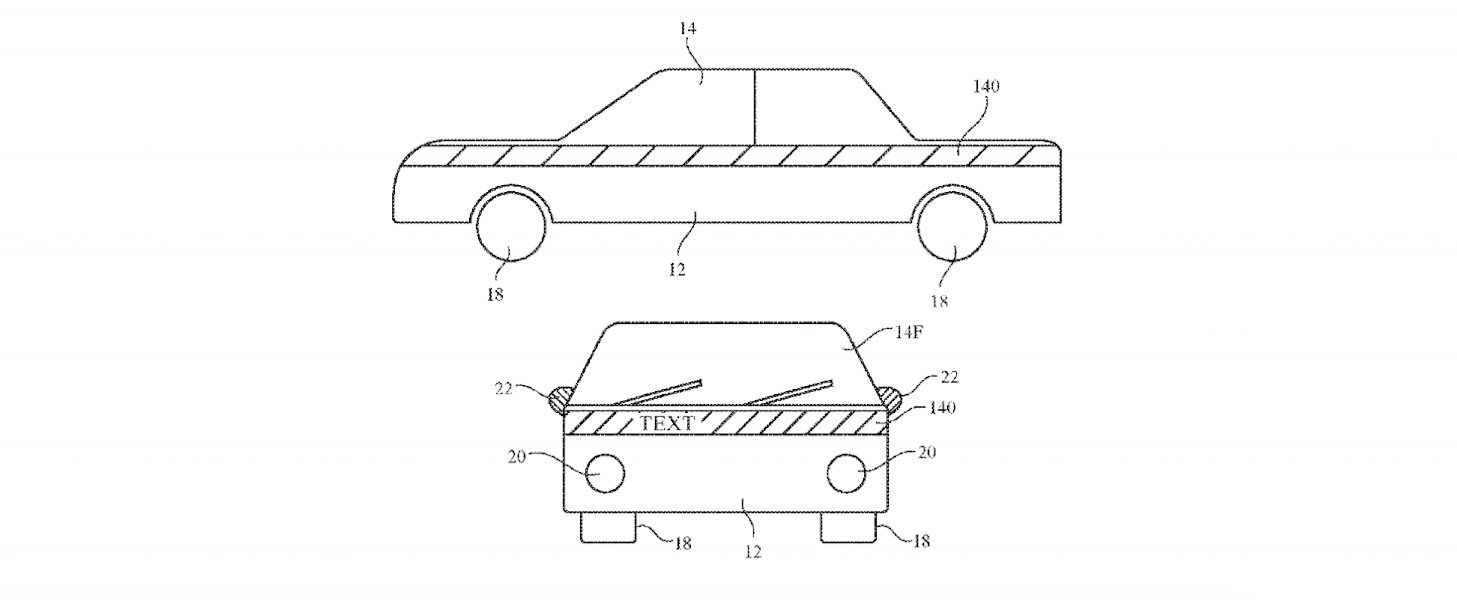A new patent granted to Apple by U.S Patent and Trademark Office reveals that the company is working on an “Exterior lighting and warning system” for its autonomous electric vehicle (EV) to display the car’s actions to other drivers.
Apple’s Project Titan is picked up pace in recent years, after being in abeyance since 2016. The company is allegedly developing its first passenger vehicle with self-driving sensors, a revolutionary battery technology, LiDAR scanners for navigation, Augmented Reality display, and more. Recently, former BMW executive and CEO of Canoo Inc. Ulrich Kranz and Apple’s health and Apple Watch exec Kevin Lynch have joined the Apple Car team. The company is reportedly in talks with South Korean partners for EV manufacturing.

Apple Car will be equipped with a sensor system to display its controls, speed, and other actions
Conventional cars have a braking system to warn other drivers on the road when a vehicle is backing up. The rear backlights come off when a driver is reversing a car, especially when parking. But, the filing explains that this system might not be adequate for an EV. Therefore, it proposes improved “brake lighting and warning systems.”
The company wants to equip the Apple Car with a sensor system to display its controls, speed, and even distance between objects or cars to avoid a collision.
A vehicle may have vehicle controls that are used in steering, braking, and accelerating the vehicle. The vehicle may have sensors that gather information on speed, orientation, position, and other vehicle operating status information. The sensors may also gather information on relative speed between the vehicle and a following vehicle, information on when there is a risk of a collision between the vehicle and an external object, road conditions, and other environmental conditions.
The car may use a sound to indicate brake or an LED display to show warnings and other messages.
A vehicle may have audio output devices to create audio output, light-based devices such as devices based on one or more light-emitting diodes to supply light output, and wireless circuitry to wirelessly transmit warnings and other messages. Light-based devices may use edge-lit or backlit light guides, organic light-emitting diode display panels, liquid crystal display panels, light modulators based on liquid crystals, and other circuitry for generating light output. The light output may include large areas of a single color, may include text, icons, or other visual content, may include moving content, may include light of multiple colors, and may include other patterns of light.

The document details that the smart Apple Car will also use the new sensor system to track the owners’ location and to greet them with a welcome or good morning sign when they are when approaching it.
Light-based devices may also display greetings and other information to a driver of a vehicle as the driver is approaching the vehicle from the outside and as the driver walks around the vehicle. Sensors may track the location of a user who is near to the vehicle and can adjust the light-based devices so that a greeting or other information is presented on a portion of the vehicle that can be viewed by the user. Good-by messages may be presented to a driver after the driver has parked the vehicle and is leaving the vicinity of the vehicle.
Apple Car is not expected to launch anytime soon, the industry report gives a 2025-2028 launch timeframe for the alleged EV. Even then, eyes are set on what technology the company will offer. In an interview, battery pioneer, and Nobel Laureate, Akira Yoshino says that for the future of mobility, Apple is the one to look out for to deliver the next generation of electrical vehicles.
Tesla has their own independent strategy. The one to look out for is Apple. What will they do? I think they may announce something soon. And what kind of car would they announce? What kind of battery? They probably want to get in around 2025. If they do that, I think they have to announce something by the end of this year. That’s just my own personal hypothesis.
Read More:
1 comment
Comments are closed.